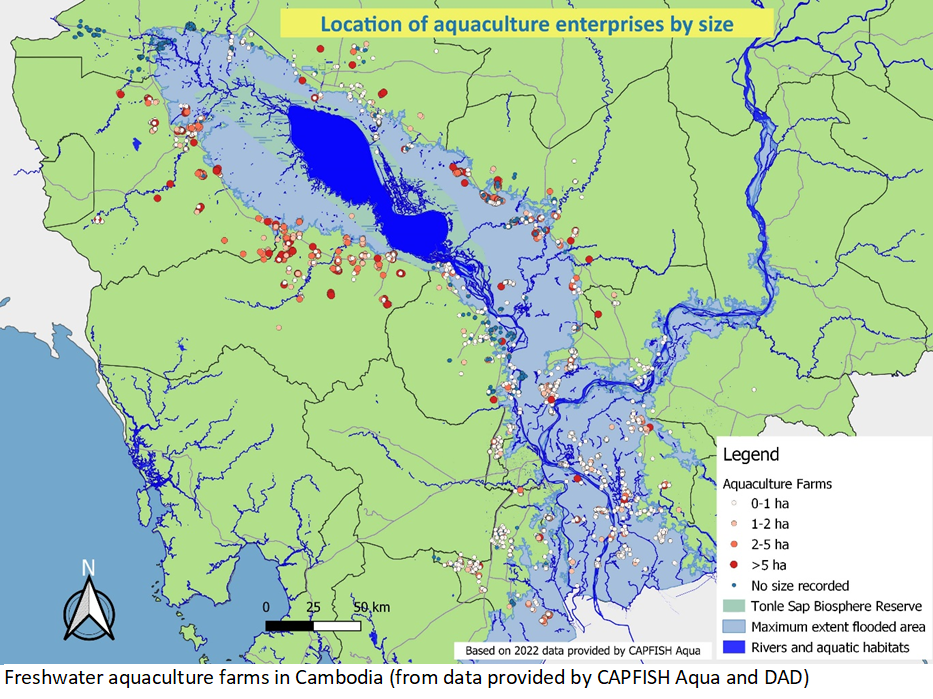Aquaculture farms in Cambodia
Inland capture fisheries are central to livelihoods and food security in Cambodia, but are under threat from growing anthropogenic pressures. Aquaculture is increasingly framed in Cambodian development policy discourse as having an important role to play in meeting demand for fish and providing rural employment, but has yet to contribute significantly to these outcomes. The main issues identified are:
(i) The fish farm sector in Cambodia is comprised mainly of small family farms raising carnivorous fish species or pangasius, using direct inputs of “trash fish” harvested from the wild;
(ii) Most fish seed and pelleted feed are imported, and domestic producers of these inputs struggle to compete;
(iii) Fish farmed in Cambodia is mostly sold live. Farm fish are more expensive than the main species harvested from inland capture fisheries, and struggle to compete with imported farmed fish;
(iv) Capture fisheries employ many times more people than aquaculture;
(v) Space for aquaculture is limited because few locations have both perennial access to water and protection from flooding.
Aquaculture can make important contributions to livelihoods, often as a supplementary or alternative livelihood activity, particularly in areas where there may be fewer capture fisheries opportunities. Under the EU CAPFISH programme support to Cambodia, CAPFISH Aqua collaborates with FiA to find solutions and opportunities for sustainable aquaculture development. A number of databases have been developed to monitor the sector and are made available here.

